The History of The Lawn
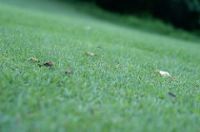
 But the 'lawn' as a concept was not recognised until 1540, when the word 'laune' first appears in print. It is likely related to the Celtic Brythonic word which means 'enclosure'. This hints at the origins of a managed grass area – not, originally, a place of human recreation but an area of pasture. At first, these areas were managed occasionally, perhaps, with hand scythes but were mostly managed by grazing livestock, which, through their eating, kept the grass short. These were practical
But the 'lawn' as a concept was not recognised until 1540, when the word 'laune' first appears in print. It is likely related to the Celtic Brythonic word which means 'enclosure'. This hints at the origins of a managed grass area – not, originally, a place of human recreation but an area of pasture. At first, these areas were managed occasionally, perhaps, with hand scythes but were mostly managed by grazing livestock, which, through their eating, kept the grass short. These were practical 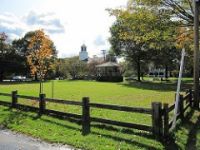 areas in villages and on small farms rather than the relaxation areas that we see today. Areas around castles were also often kept tree-free to make it easier for watchmen to see enemies approaching.
areas in villages and on small farms rather than the relaxation areas that we see today. Areas around castles were also often kept tree-free to make it easier for watchmen to see enemies approaching.
It was not until the Middle Ages in northern Europe that a lawn more similar to our modern concept of a lawn began to gain in popularity. The majority of people living would use the curtilages of their homes to grow their own fruit and vegetables, and have a 'common', or area of grassy land shared between them, to keep livestock. Amongst the aristocracy, however, a more aesthetic concept began to 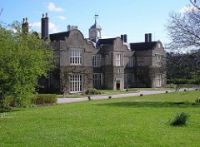 take off. Private, ornamental lawns began to be seen as part of elaborate formal gardens and the idea of a 'lawn' began to separate from the idea of a 'pasture' which had pretty much been indistinguishable before that time. During the 16th Century and thereafter, wealthy landowners used much of their grassland for livestock but also had separate lawns around their homes. Sometimes these were maintained by servants using hand scythes, though were also often still grazed by livestock. Areas of grass grazed regularly by rabbits, sheep or horses over a long period develop a low, tight sward similar to that of a modern lawn.
take off. Private, ornamental lawns began to be seen as part of elaborate formal gardens and the idea of a 'lawn' began to separate from the idea of a 'pasture' which had pretty much been indistinguishable before that time. During the 16th Century and thereafter, wealthy landowners used much of their grassland for livestock but also had separate lawns around their homes. Sometimes these were maintained by servants using hand scythes, though were also often still grazed by livestock. Areas of grass grazed regularly by rabbits, sheep or horses over a long period develop a low, tight sward similar to that of a modern lawn.
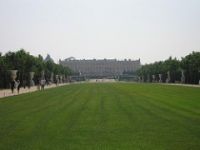 The lawn became a sign of wealth and privilege and became aspirational. Before the invention of mowing machines in 1830, lawns were still mostly elements of the homes of the wealthy or were on common grazing ground. One influential example of a lawn similar to those found today in garden design is the 'tapis vert' or 'green carpet' in the gardens of Versailles. The gardens of Versailles were copied by many wealthy landowners across Europe. Over the 17th and 18th Centuries, the 'English' lawn was born, as a place for the rich to walk and socialise.
The lawn became a sign of wealth and privilege and became aspirational. Before the invention of mowing machines in 1830, lawns were still mostly elements of the homes of the wealthy or were on common grazing ground. One influential example of a lawn similar to those found today in garden design is the 'tapis vert' or 'green carpet' in the gardens of Versailles. The gardens of Versailles were copied by many wealthy landowners across Europe. Over the 17th and 18th Centuries, the 'English' lawn was born, as a place for the rich to walk and socialise.
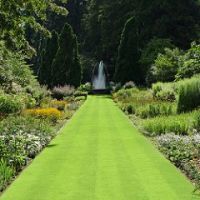 The invention of the lawn mower by Edwin Beard Budding in 1830 made it possible for the middle classes to maintain areas of lawn around their own homes. Lawns really began to take off in the 19th and early 20th Century and the rise of the suburbs greatly contributed to the spread of the lawn. Increased wealth also meant that a disconnect crept in between people and their food and far fewer people grew their own. Lawns, over time, became less a status symbol and more about aesthetics. Lawns came, over the 20th Century, to represent a whole host of cultural and societal norms.
The invention of the lawn mower by Edwin Beard Budding in 1830 made it possible for the middle classes to maintain areas of lawn around their own homes. Lawns really began to take off in the 19th and early 20th Century and the rise of the suburbs greatly contributed to the spread of the lawn. Increased wealth also meant that a disconnect crept in between people and their food and far fewer people grew their own. Lawns, over time, became less a status symbol and more about aesthetics. Lawns came, over the 20th Century, to represent a whole host of cultural and societal norms.
Today, lawns are using greater amounts of chemical fertiliser and pesticides per acre than cultivated farmland. Many are rejecting the widespread use of the lawn and advocating a return to gardens devoted to growing and a more sustainable way of managing grassland. So while a lower maintenance lawn can sequester carbon, gardeners are increasingly realising that there are better alternatives to the manicured lawn.